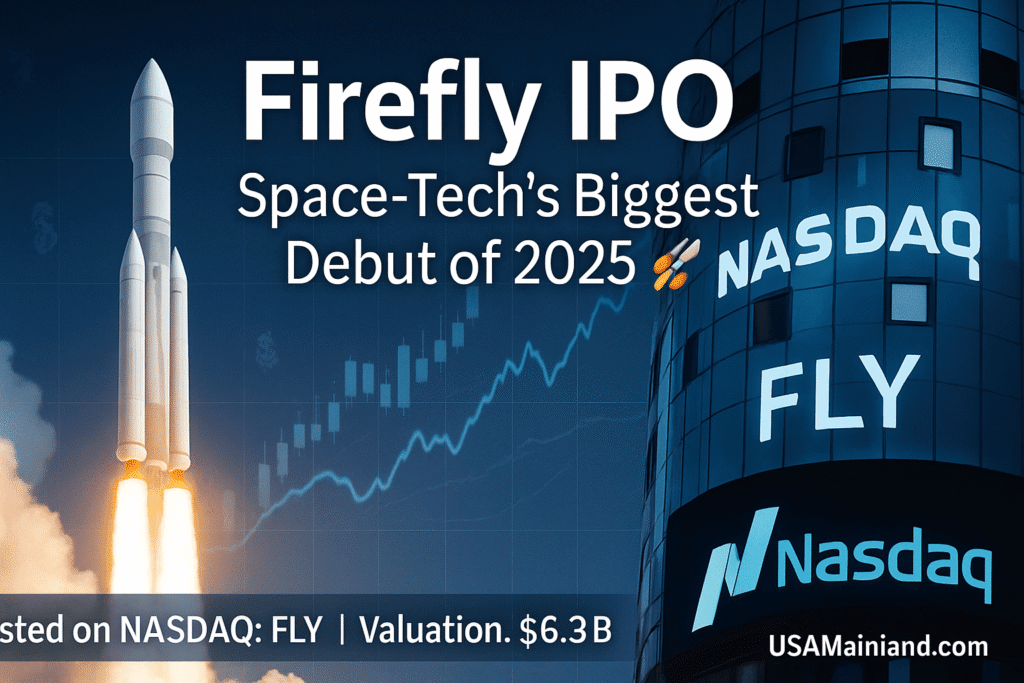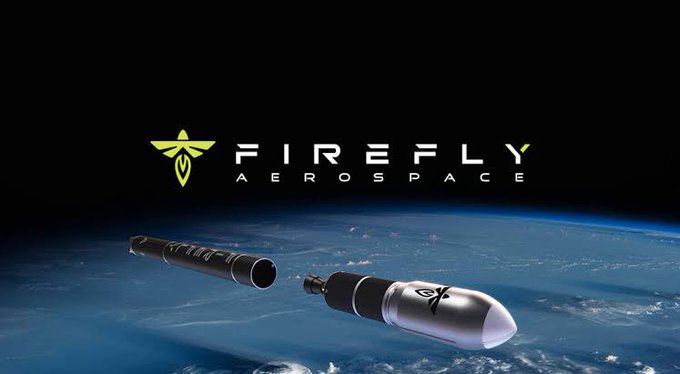Introduction: Firefly IPO Ignites Investor Interest
The Firefly IPO has officially taken off, making headlines as the largest space-tech public offering in the United States in 2025. Firefly Aerospace debuted on the NASDAQ under the ticker symbol “FLY”, pricing its IPO at \$45 per share—above its projected range—and raised an impressive \$868 million.

Backed by recent technological breakthroughs and successful lunar missions, Firefly’s market entry is seen as a strong vote of confidence in the growing private space exploration industry. Investors rushed to grab a piece of this high-growth, high-tech player, boosting post-listing expectations.
Key Highlights of Firefly IPO
- Company: Firefly Aerospace
- IPO Date: August 7, 2025
- Shares Offered: 19.3 million
- Price per Share: \$45
- Funds Raised: ~\$868 million
- Valuation at Listing: ~\$6.32 billion
- Exchange: NASDAQ (Ticker: FLY)
About Firefly Aerospace
Founded in 2014, Firefly Aerospace is a Texas-based private aerospace firm focused on launch vehicle development, lunar transportation, and space infrastructure.
The company made global headlines in March 2025 with the successful deployment of its Blue Ghost lunar lander, marking a major milestone in private space exploration. Firefly is recognized for designing affordable, reusable launch systems that aim to compete with giants like SpaceX and Rocket Lab.
Company Focus:
- Medium-lift rockets (Alpha and Beta)
- Lunar lander tech (Blue Ghost)
- In-space services (Elytra orbital vehicle)
Firefly’s core mission is to “make space accessible to everyone.”
Firefly IPO Breakdown
Key Details:
| Detail | Info |
|---|---|
| IPO Date | August 7, 2025 |
| Shares Offered | 19.3 million |
| IPO Price | \$45 |
| Total Raised | ~\$868 million |
| Valuation | ~\$6.3 billion |
| Stock Ticker | FLY (NASDAQ) |
The Firefly Aerospace stock debut follows a strong pre-IPO buzz driven by recent mission successes and a growing commercial backlog. The company priced above its expected range of \$41–43 per share, signaling high investor demand.
Market Reception & Investor Demand
The Firefly IPO price and performance reflect a surge of investor enthusiasm for space technology in a year filled with speculative energy.
- Strong Book-Building: Reports indicated oversubscription by institutional investors prior to the IPO.
- Opening Day Pop: Shares opened at \$52, surging more than 15% in early trading hours.
- Retail Buzz: Trending across Reddit, X (formerly Twitter), and FinTok as a “space stock to watch.”
This IPO marks the third space-sector debut this year, after Voyager Technologies and Karman Holdings, but it is the most successful in terms of capital raised and valuation.
What Makes Firefly Stand Out
Firefly Aerospace isn’t just another rocket company. Its recent achievements and pipeline differentiate it in a crowded space-tech market:

Key Differentiators:
- Successful Moon Landing: Blue Ghost touched down on the lunar surface in March 2025, delivering scientific payloads for NASA.
- Contract Backlog: Over \$1.1 billion in signed launch contracts, including with NASA, U.S. Air Force, and commercial clients.
- Future Products:
- Elytra: A next-generation orbital vehicle for space station resupply and satellite servicing.
- Beta Rocket: A reusable heavy-lift rocket under development.
- Dual Revenue Model: Mix of government contracts and commercial launches ensures stability.
With growing geopolitical interest in space dominance and lunar exploration, Firefly’s dual-use tech positions it for long-term success.
Comparison with Other 2025 Space IPOs
| Company | Funds Raised | Valuation | Notable Feature |
|---|---|---|---|
| Firefly Aerospace | \$868M | \$6.3B | Successful Moon Lander |
| Voyager Technologies | \$412M | \$3.1B | Earth Observation Satellites |
| Karman Holdings | \$294M | \$2.6B | Satellite Constellation Service |
While others tapped into niche markets, Firefly’s full-stack approach (launch, lunar, orbital) makes it a broader play for institutional and retail investors alike.
Analyst Commentary
Financial analysts are optimistic—but cautiously so.
“Firefly’s post-IPO performance will depend on execution, especially in scaling its launch cadence. The \$1.1B backlog provides a solid runway, but investors should watch production bottlenecks and burn rate.”
— Jessica Park, Aerospace Analyst, JP Morgan“This isn’t just a hype-driven IPO. Firefly has real assets, government contracts, and a credible moonshot story.”
— Kevin Liu, Tech Markets Reporter, Bloomberg
Still, experts warn that space is capital intensive, and rising rates could impact long-term margins.
Risks and Considerations
Investors should keep the following in mind:
- High CapEx Business: Rocket development and lunar missions require significant funding.
- Technical Failures: One launch failure can cause reputation and financial damage.
- Macro Volatility: Global tensions or budget changes in NASA funding can impact forecasts.
- Lock-up Periods: Insider shares may flood the market post-lock-up, affecting price.
Conclusion: Firefly’s IPO Launches a New Chapter in Space Investing
The Firefly IPO has solidified the company’s position as a leading player in the space-tech industry. With a strong contract pipeline, proven technological milestones, and investor enthusiasm, Firefly Aerospace’s stock (NASDAQ: FLY) is off to a stellar start.
For investors with an appetite for risk—and a belief in the future of commercial space—FLY could be a long-term portfolio bet worth watching.
For more News and update visit usamainland.com.



